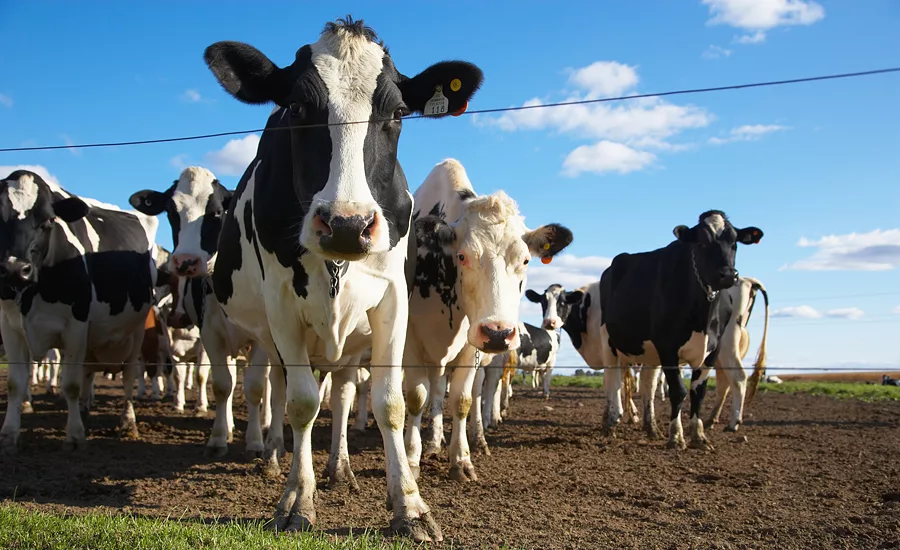Study: Grass-fed diets on dairy farms produce nutritionally enhanced milk
Grassmilk provides by far the highest level of omega-3s compared to conventional milk.

Cows fed a 100% organic grass and legume-based diet produce milk with elevated levels of omega-3 and CLA, according to a collaborative research project with the University of Minnesota, Minneapolis; Johns Hopkins University, Baltimore, Md.; Newcastle University, England; Southern Cross University, Australia; and the Aarhus University Hospital, Denmark. Researchers found that the improved fatty acid profile in grass-fed organic milk and dairy products (also known as grassmilk) brings the omega-6/omega-3 ratio to a near 1 to 1, compared to 5.7 to 1 in conventional whole milk.
“With growing consumer demand for organic dairy products, producers may be able to expand their profitability and market share by converting to grass-based pasture and forage-feeding systems,” says Dr. Bradley Heins, associate professor of dairy science at the University of Minnesota’s West Central Research and Outreach Center and co-author of the research project.
Findings from the study, “Enhancing the Fatty Acid Profile of Milk through Forage-Based Rations, with Nutrition Modeling of Dietary Outcomes,” compared the fatty acid profile of milk from cows managed under three systems in the United States:
- “Grassmilk” cows receive an essentially 100% organic grass and legume forage-based diet via pasture and stored feeds like hay and silage.
- “Organic” cows receive, on average, about 80% of their daily dry matter intake (DMI) from forage-based feeds and 20% from grain and concentrates.
- “Conventional” cows are fed rations in which forage-based feeds account for an estimated 53% of daily DMI, with the other 47% coming from grains and concentrates. Conventional management accounts for over 90% of the milk cows on U.S. farms.
Grassmilk provides by far the highest level of omega-3s—0.05 grams per 100 grams of milk (g/100 grams), compared to 0.02 g/100 grams in conventional milk, a 147% increase in omega-3s. Grassmilk also contains 52% less omega-6 than conventional milk and 36% less omega-6 than organic milk. In addition, the research team found that grassmilk has the highest average level of CLA—0.043 g/100 grams of milk, compared to 0.019 grams/100 grams in conventional milk and 0.023 grams/100 grams in organic.
“The near-perfect balance of omega-6 and omega-3 fatty acids in grassmilk dairy products will help consumers looking for simple, lifestyle options reduce the risk of cardiovascular and other metabolic diseases,” says Charles Benbrook, a visiting scholar at the Bloomberg School of Public Health at Johns Hopkins University and co-author of the report.
The team analyzed over 1,160 samples of whole grassmilk taken over three years from on-farm bulk tanks prior to any processing. All samples came from farmer members of CROPP Cooperative, La Farge, Wis., and were tested by an independent laboratory.
Looking for quick answers on food safety topics?
Try Ask FSM, our new smart AI search tool.
Ask FSM →







